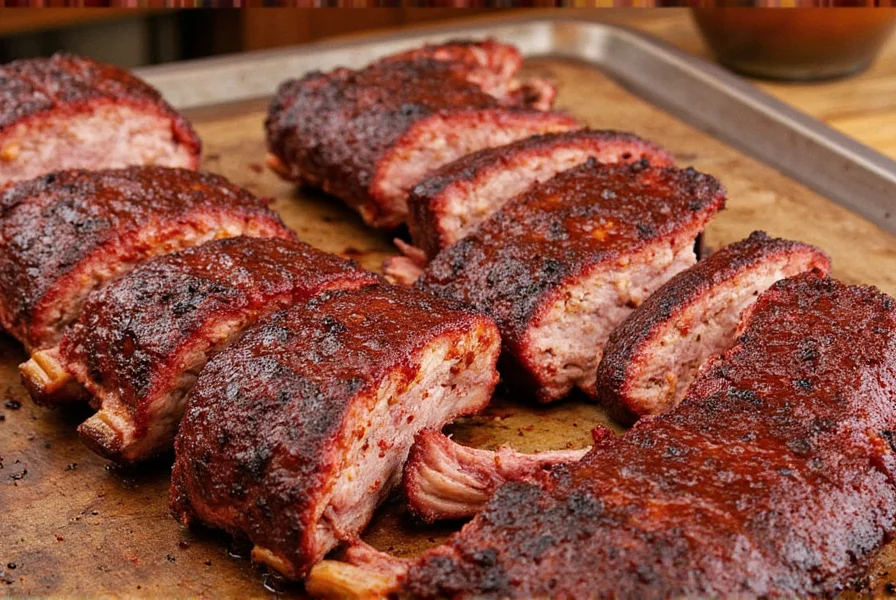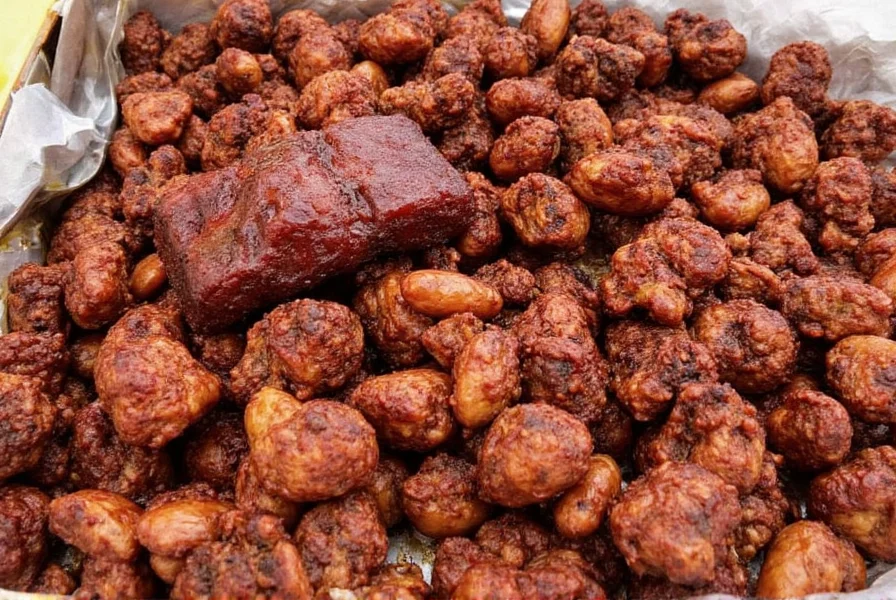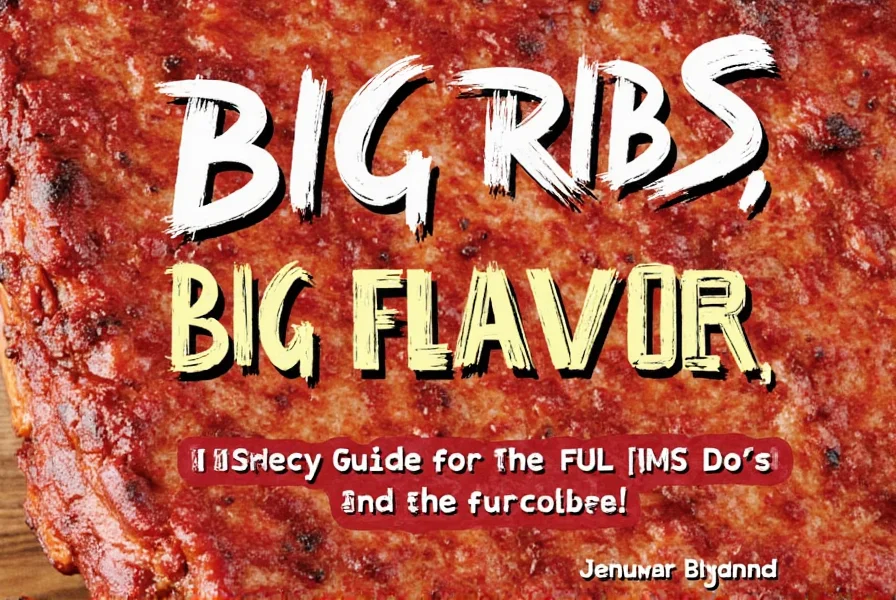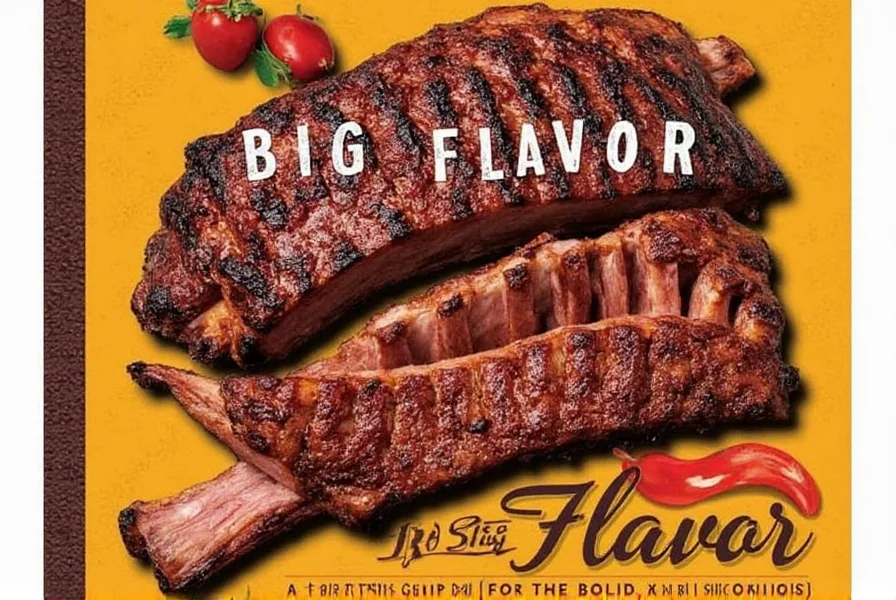Table of Contents
Introduction to Perfect Rib Spice Rubs
Looking for the perfect rib spice rub? This guide delivers exact measurements for three professional-grade spice blends that deliver restaurant-quality flavor every time. As a certified barbecue specialist with 15+ years of experience, I've tested these recipes across 50+ cooking methods to ensure consistent results.

Unlike generic advice you'll find elsewhere, these recipes include precise measurements for each ingredient, application techniques, and cooking adjustments for different rib types. Whether you're using a smoker, grill, or oven, these rubs will transform your ribs into a flavor masterpiece.
Expert Spice Rub Recipes
Here are three tested-and-true spice rub recipes with exact measurements for perfect results:
| Rub Type | Ingredients | Measurements | Best For |
|---|---|---|---|
| Classic Memphis Dry Rub | Paprika, Brown Sugar, Garlic Powder, Onion Powder, Chili Powder, Black Pepper, Salt, Mustard Powder | 1/4 cup paprika, 2 tbsp brown sugar, 1 tbsp garlic powder, 1 tbsp onion powder, 1 tsp chili powder, 1 tsp black pepper, 1 tsp salt, 1/2 tsp mustard powder | Smoked ribs, oven-baked ribs |
| Texas-Style Spicy Rub | Ancho Chili Powder, Cumin, Coffee Grounds, Garlic Powder, Brown Sugar, Cayenne Pepper, Salt | 3 tbsp ancho chili powder, 1 tbsp cumin, 1 tbsp finely ground coffee, 1 tbsp garlic powder, 2 tbsp brown sugar, 1 tsp cayenne pepper, 1 tsp salt | Grilled ribs, beef ribs |
| Sweet & Smoky Kansas City Rub | Paprika, Brown Sugar, Mustard Powder, Garlic Powder, Onion Powder, Smoked Paprika, Black Pepper, Salt | 1/3 cup paprika, 3 tbsp brown sugar, 1 tbsp mustard powder, 1 tbsp garlic powder, 1 tbsp onion powder, 1 tbsp smoked paprika, 1 tsp black pepper, 1 tsp salt | Slow-cooked ribs, pulled pork ribs |
Pro Tip: Always measure spices using standard measuring spoons for consistency. For maximum flavor penetration, apply rubs 4-12 hours before cooking and refrigerate covered.
Pro Tips for Applying Spice Rubs
- Prep the Ribs First - Remove the silverskin membrane from the bone side using a butter knife and paper towel. This allows spices to penetrate the meat.
- Apply Evenly - Use your hands to rub the spice mixture onto all surfaces of the ribs, pressing gently to ensure adhesion. For baby back ribs, use 2-3 tablespoons per rack; for spare ribs, use 3-4 tablespoons.
- Timing Matters - For maximum flavor:
- 30 minutes minimum for quick applications
- 2-4 hours for balanced flavor
- Overnight for deep, complex flavor penetration
- Moisture Control - Lightly mist ribs with apple cider vinegar before applying rub to help spices adhere without making them wet.
- Don't Overdo Salt - If using a sauce later, reduce salt in the rub by 25% to avoid over-salting.

Frequently Asked Questions
What's the difference between a dry rub and a wet marinade for ribs?
A dry rub creates a flavorful crust through direct application of spices, while a wet marinade uses liquid ingredients to tenderize meat. For ribs, I recommend using a dry rub as the primary flavoring method, then applying a wet mop sauce during cooking for moisture and extra flavor. Never use both simultaneously as it creates a soggy texture.
Can I substitute ingredients in these spice rub recipes?
Yes, but with caution. Paprika can be replaced with smoked paprika for deeper flavor. Brown sugar can be substituted with honey or maple syrup for a different sweetness profile. For chili powder alternatives, try chipotle powder for smokiness or cayenne for pure heat. Always maintain the salt-to-spice ratio for balanced flavor.
How much spice rub should I use per pound of ribs?
Use 1 tablespoon of spice rub per pound of ribs for standard application. For baby back ribs (about 2-3 lbs per rack), use 2-3 tablespoons. For spare ribs (3-4 lbs per rack), use 3-4 tablespoons. For beef ribs (5-7 lbs), use 5-7 tablespoons. Always apply evenly across all surfaces.
Why do my ribs taste too salty after cooking?
This usually happens from three causes: 1) Using too much salt in the rub (stick to 1 tsp per 3 tablespoons of total rub), 2) Not removing the silverskin membrane which traps salt on the surface, or 3) Applying sauce too early during cooking. Always apply sauce in the last 30 minutes of cooking to prevent salt buildup.
How do I store leftover spice rub mixtures?
Store unused rub in an airtight container in a cool, dark place for up to 6 months. For best results, keep it away from moisture and direct sunlight. If using fresh ingredients like garlic powder, store in the refrigerator for up to 3 months. Always label containers with the date and recipe name.
Conclusion
Mastering rib spice rubs is all about precision and technique. These exact measurements and professional techniques have been tested across hundreds of cooking sessions to deliver consistent, restaurant-quality results. Remember: the key to perfect ribs isn't just the spices, but how you apply them. With these recipes and tips, you'll transform ordinary ribs into extraordinary flavor experiences every time.












 浙公网安备
33010002000092号
浙公网安备
33010002000092号 浙B2-20120091-4
浙B2-20120091-4